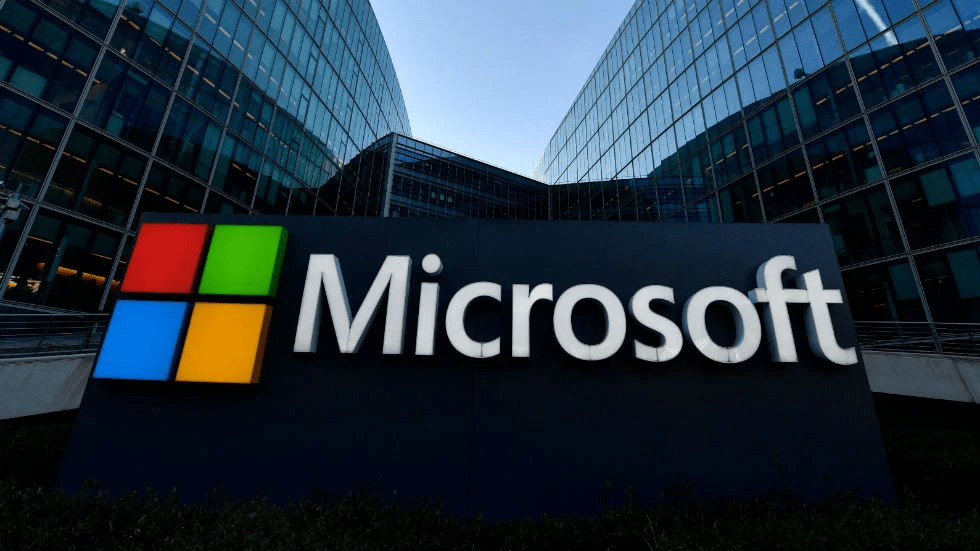Tech
Persona 4 Golden PC runs perfectly, and even after Persona 5 Royal it feels great to play – GamesRadar+
Persona 4 Golden has come to PC, and I still can’t believe it. I never imagined Atlus would actually bring one of its most important and PlayStation-faithful franchises to another platform, let alone the PC, which the developer has barely touched. Fortunately, I don’t have to imagine it anymore. I’ve played the PC port, and it’s great. I’ve been spoiled by the many innovations and quality of life features in Persona 5 and Persona 5 Royal, but Persona 4 Golden not only holds up well, it offers a distinct experience that still sets it apart from the rest of the Persona series.
Persona 4 Golden PC is a straight port of the original game. It isn’t missing anything, and it doesn’t have anything extra – which is fine, really. I reckon PC players will be happy to have access to this storied JRPG at all (without relying on an emulator, that is). And it doesn’t need anything else. Persona 4 was great when it launched on PS2 in 2008, and 2012’s Golden re-release is a strictly better version with oodles of new content that can easily push your playtime over the 100-hour mark. In other words, pretty much everything that was said about Persona 4 Golden eight years ago still rings true. With that in mind, I mainly want to focus on the quality of the PC port and how the game itself compares to modern JRPG standards.
Port report
I’ve only had time to play the first portion of the PC version, but I’ve had zero performance issues whatsoever. The frame rate is unlocked and mine stays well over 60 (on an i7-9700k and RTX 2080 Super). Everything loads quickly, and menus are snappy and responsive. I’ve been playing at 1440p, and I haven’t noticed much stretching outside of the animated cutscenes, which are somewhat disappointingly low-res. Playing at a lower resolution in windowed mode mostly fixes this, but the quality isn’t so bad that I want to give up my big screen.
Windowed mode is kind of the only workaround too, because graphics settings are limited to render scale, shadows, anisotropic filtering, and anti-aliasing, with a couple settings apiece. There are definitely some dated textures too, and the character models are blocky, but that’s to be expected from what started as a PS2 game. Character portraits look great, and I care about that more than anything. Basically, it looks how you’d expect and it runs smoothly.

Surprisingly, Persona 4 Golden PC does have full mouse and keyboard support. But while this control scheme is perfectly serviceable for putting around town, it falls apart when you’re exploring dungeons. By default, you use Q and E to rotate the camera, and this gets real awkward, real quick. It is cool that you can technically play the game with one hand using the default keybinds, and the mouse is integrated fairly well, but playing with a gamepad feels better in every way. I quickly hooked up my PS4 controller and it worked fine. I couldn’t get the game to show PS4 button prompts, sadly, but I suspect that’ll be fixed with a mod soon.
So, the port is rock-solid, and the game plays exactly like it did eight years ago. And I think that’s a good thing for the most part. Persona 5 and Royal added a lot of cool and comfortable things to the Persona formula, but there’s also a lot of stuff in Persona 4 Golden that’s never been replicated. And now that I’m experiencing it again, I’m kind of sad that these things were left behind.
Some rough edges

Let’s get this out of the way first: there are some things you’ll definitely miss if you’re coming into this game after playing Persona 5 Royal. Social Link benefits are a big one, because outside of your teammates, the Social Links in Persona 4 Golden are mostly there for character development and fusion EXP. There aren’t nearly as many other bonuses – no paying Kawakami to do your laundry or whatever. It’s also more difficult to max all your Social Links in one go since there are fewer ways to bypass the dreaded “just here for brownie points” hangout sessions that don’t advance your Link.
Additionally, there’s no Mementos-equivalent grind-a-thon, no Baton Pass in combat, and there are fewer element types (no Gun, Psy or Rad, and only insta-kill Light and Dark attacks). Oh, and initiating fights can be finicky because you actually have to run up and smack Shadows instead of pouncing on them from stealth from approximately half a mile away. The lack of a cover system makes exploration a little more monotonous too.
Those are the big ones that stuck out to me, but it’s nothing I can’t live without. And again, Persona 4 Golden has a lot of cool systems of its own. At the end of fights, for instance, you can enter Shuffle Time and pick from a pool of rewards, like bonus EXP or a new Persona. Shuffle Time becomes really handy later on, especially as you unlock more Social Links. I also like that you can collect materials and bring them to a craftsman to make custom weapons, rather than relying on shop inventories and combat drops. There’s a more direct quest system woven into the game too, and while quests aren’t always rewarding, I like that they aren’t sequestered off like the Mementos missions.
A darker tone for a darker town

More than anything, I was struck by the difficulty, tone, and music of Persona 4 Golden, and I think these are the things that really set it apart. Persona 5 is very easy, and Persona 5 Royal is pretty easy, even on their hardest difficulties. But Very Hard or even just Hard mode in Persona 4 Golden will beat your whole ass if you slip up, which I love. The added challenge encourages you to min-max Personas and Social Links to become as strong as possible, and it makes bosses much more threatening.
And while the story has some obvious parallels to Persona 5 – move to a new town to live with a no-nonsense family member and inevitably stumble into some supernatural shenanigans – it’s presented very differently. Persona 4 Golden straight-up opens with two murders, which really sets the stage and stakes for its more mystery-driven narrative. On top of that, I’d forgotten how well Persona 4 handles the concept of Personas and Shadows.
In Persona 5, characters awaken to Persona by defying unfair circumstances or labels thrust upon them. Persona are sort of a blanket manifestation of rebellion, which works in a story about youth and societal reform. But in Persona 4 Golden, Personas are born from peoples’ conquered Shadows, which represent the repressed and ugly parts of their personality. They’re a mass of petty, spiteful, and extreme urges devoid of all inhibitions, and characters have no choice but to confront them.

This dynamic – main characters reluctantly accepting their Shadows as part of their psyche – is a driving force in the overall plot, and the inner battles that different characters face add a lot to the coming-of-age stories that all Persona games try to tell. I don’t want to spoil the specifics, but Persona 4 Golden deals with heavy, interesting themes – masculinity, sexuality, self-worth, agency. You know, the kinds of things that real teens grapple with when they aren’t on a quest to kill a god.
Finally, the music. I mean, what more needs to be said. The Persona 4 Golden soundtrack is banger after banger, and it’s incredibly varied. The Persona 5 OST has a great theme to it – a wonderful mix of brass and bass, snares and keys – and it’s got some of my favorite individual tracks in the series, but I think Persona 4 Golden wins in both variety and maybe even energy. Its high tracks have more bombastic pop and rock to them, and its lows are rich with rhythm and blues. I’m listening to it right now, and I’m glad more people will get to experience it.
So, is Persona 4 Golden PC a good port? Yeah. Is Persona 4 Golden still good? Oh yeah. Will you enjoy it regardless of whether you’ve played Persona 5 Royal or no Persona games at all? Yeah, I honestly think you will. It’s one of the best games of a previous era, and if anything, the qualities that made it stand out back then are even more striking today.
Tech
Google Unveils AI-Powered Pixel 9 Lineup Ahead of Apple’s iPhone 16 Release
Google has launched its next generation of Pixel phones, setting the stage for a head-to-head competition with Apple as both tech giants aim to integrate more advanced artificial intelligence (AI) features into their flagship devices. The unveiling took place near Google’s Mountain View headquarters, marking an early debut for the Pixel 9 lineup, which is designed to showcase the latest advancements in AI technology.
The Pixel 9 series, although a minor player in global smartphone sales, is a crucial platform for Google to demonstrate the cutting-edge capabilities of its Android operating system. With AI at the core of its strategy, Google is positioning the Pixel 9 phones as vessels for the transformative potential of AI, a trend that is expected to revolutionize the way people interact with technology.
Rick Osterloh, Google’s senior vice president overseeing the Pixel phones, emphasized the company’s commitment to AI, stating, “We are obsessed with the idea that AI can make life easier and more productive for people.” This echoes the narrative Apple is likely to push when it unveils its iPhone 16, which is also expected to feature advanced AI capabilities.
The Pixel 9 lineup will be the first to fully integrate Google’s Gemini AI technology, designed to enhance user experience through more natural, conversational interactions. The Gemini assistant, which features 10 different human-like voices, can perform a wide array of tasks, particularly if users allow access to their emails and documents.
In an on-stage demonstration, the Gemini assistant showcased its ability to generate creative ideas and even analyze images, although it did experience some hiccups when asked to identify a concert poster for singer Sabrina Carpenter.
To support these AI-driven features, Google has equipped the Pixel 9 with a special chip that enables many AI processes to be handled directly on the device. This not only improves performance but also enhances user privacy and security by reducing the need to send data to remote servers.
Google’s aggressive push into AI with the Pixel 9 comes as Apple prepares to unveil its iPhone 16, which is expected to feature its own AI advancements. However, Google’s decision to offer a one-year free subscription to its advanced Gemini Assistant, valued at $240, may pressure Apple to reconsider any plans to charge for its AI services.
The standard Pixel 9 will be priced at $800, a $100 increase from last year, while the Pixel 9 Pro will range between $1,000 and $1,100, depending on the model. Google also announced the next iteration of its foldable Pixel phone, priced at $1,800.
In addition to the new Pixel phones, Google also revealed updates to its Pixel Watch and wireless earbuds, directly challenging Apple’s dominance in the wearable tech market. These products, like the Pixel 9, are designed to integrate seamlessly with Google’s AI-driven ecosystem.
Google’s event took place against the backdrop of a significant legal challenge, with a judge recently ruling that its search engine constitutes an illegal monopoly. This ruling could lead to further court proceedings that may force Google to make significant changes to its business practices, potentially impacting its Android software or other key components of its $2 trillion empire.
Despite these legal hurdles, Google is pressing forward with its vision of an AI-powered future, using its latest devices to showcase what it believes will be the next big leap in technology. As the battle for AI supremacy heats up, consumers can expect both Google and Apple to push the boundaries of what their devices can do, making the choice between them more compelling than ever.
News
Microsoft Outage Hits Payment Processors

When major payment processing systems have problems, the issues impact many critical systems that society depends on. In this article, we’ll explain the cause of the Microsoft outage and discuss the impact computer networking issues had on Canada. We’ll also examine whether or not Microsoft was at fault and what businesses can do to prevent further outages.
What Happened With the Microsoft Outage?
The outage with Microsoft’s Azure payment processor resulted from a buggy security update from an outside company, CrowdStrike. CrowdStrike offers information technology security services for many Microsoft Windows computers. The company’s software developers sent a new update out, but instead of patching up minor issues with the existing software, the code within conflicted with Windows and prevented computers from booting up. Users expecting to start their computers for a typical day were instead faced with the dreaded “Blue Screen of Death” error message.
So, how does this produce a problem and a payment processor issue? Many computers running payment processing, among many other kinds of software used for airlines, banks, retail, and other essential services, couldn’t start and were unable to let payments through. This is a catastrophic issue for companies that are heavily reliant upon the speed and ease of an electronic transaction.
In Canada, the outage impacted critical computer systems for air travel. Flights couldn’t be paid for and booked, which caused major problems for customers unable to make transactions while flights remained grounded. Travellers stuck waiting for flights to take off made their way over to the airports’ Starbucks and other vendors, only to discover unusually long lines due to payment issues. Even online gamblers looking to take their minds off the situation couldn’t take full advantage of one of the fastest payment options out there because of the outage.
Aside from payments, hospitals for major health systems had to use paper to complete important tasks like ordering lab work and getting meals to patients. Emergency dispatch lines were temporarily unable to function correctly while their computer systems were down.
How Was the Outage Fixed?
Thankfully, CrowdStrike fixed the problem on their end quickly, mostly via an additional reboot that allowed CrowdStrike to send over unflawed code. Unfortunately, for some business and private customers, rebooting wouldn’t be enough with command-line level adjustments needed for the operating system to run correctly.
The Good and Bad of Outages
First, we’re thankful that the outage was not caused by hackers accessing and stealing a mountain of personal data. A recent outage with an automotive software provider went on for much longer and ended much worse for software provider CDK, which likely paid an undisclosed sum north of $20 million to get data back and systems restored.
By some chance, Microsoft is reported to have experienced its own outage, and many information technology professionals blame Microsoft in part for their issues because of how their systems attempted to fix the problem by rebooting over and over again, though some of Microsoft’s PCs needed to warn users to make a change manually. Unfortunately, any computer that required manual intervention took longer to recover, as a knowledgeable person had to access each computer affected by the issue. In some cases, between dealing with several hours of backlogged tasks and slow recovery processes, some businesses took days, not hours, to get back online.
The outage brings up another major point in the cybersecurity and computer industry. CrowdStrike and Microsoft are both big companies in their respective fields. As a result, the effects of bad code spread much further than they could have if there were more competitors making security products or if there were more software companies making operating systems like Windows. While only 8 million computers were believed to be affected out of a much larger global network, those are essential computers for worldwide communication and payment processing. Perhaps companies should be putting their eggs in more than one basket?
The testing methods for the outage are unclear—did CrowdStrike test the routine software update enough to detect the potential for a major outage? Apparently not.
What Should Businesses Do Next?
Software like Microsoft Azure’s payment systems come from what information technology professionals call ‘the cloud.’ The software is remotely managed over the internet, meaning that the computer that runs the system is not physically present at the location. Unfortunately, this also means that an issue with the internet can take critical systems out of service.
Businesses ranging from major airlines and banks to mom-and-pop stores would be well served by backup systems at their locations. These don’t have to be as primitive as the old-fashioned credit-card carbon-copy slide, but there are options available with consistent service that don’t repeatedly rely on the same networks.
Conclusion
There were certainly challenging moments for Canadian businesses and emergency services during the CrowdStrike and Microsoft outage. As they scrambled to understand the problem and waited, albeit briefly, for issues to resolve, many companies learned the importance of having local and reliable backup for their computer systems.
Tech
New photos reveal more details about Google’s Pixel 9 Pro Fold

Google’s secret new line of Pixel 9 phones isn’t that big of a secret anymore. Taiwan’s National Communications Commission (NCC) released new photos of the phones including the Pixel 9 Pro Fold from almost every conceivable angle.
Android Authority found the photos in the NCC archives and uploaded galleries of each of the four phones including the Pixel 9, 9 Pro, 9 Pro XL and 9 Pro Fold. They reveal some interesting details about the new Pixel phones.
The charging rates will be a little faster than the last generation of Pixel phones: Taiwanese authorities measured 24.12W for the base model, 25.20W for the Pro and 32.67W for the 9 Pro XL. The Pixel 9 Pro Fold, however, was the slowest of all of them at 20.25W. These numbers don’t often match up perfectly with the advertised ratings, so expect Google to be promoting higher numbers at its event.
Speaking of chargers, it looks like Google needed a bigger charger to power its new phones. Photos included in the NCC leak show each phone will come with a wall charger that’s around 45W depending on which model you purchase. The charger’s plug moved from the middle to the top of the brick.
The latest photo dump also shows the 9 Pro Fold unfolded for the first time. Google has moved the selfie camera to the inside screen for a wider field of view. The 9 Pro Fold also has a slimmer top and bottom, a reduced fold crease on the display and a full 180 degree unfolding angle to make a screen that’s just over 250mm or just under 10 inches.
These photos are the latest in a very long list of leaks of Google Pixel 9 photos. The last Pixel 9 leak came down yesterday showing two prototype models of the base and XL models. Google might look into buying a new combination lock for the high school locker where they apparently keep all their unreleased gear.

-

 Business17 hours ago
Business17 hours agoQuestions Hiring Managers Ask Themselves When Assessing Candidates
-

 News17 hours ago
News17 hours agoNew Jersey floats $400 million in tax breaks to lure Philadelphia 76ers
-
Health15 hours ago
Prosperity Message From Jake – VIP
-

 News18 hours ago
News18 hours agoFormer aide to 2 New York governors is charged with being an agent of the Chinese government
-

 News17 hours ago
News17 hours agoMusk’s Starlink backtracks and says it will comply with judge’s order to block X in Brazil
-

 News16 hours ago
News16 hours agoFederal judge decries discrimination against conservative group that publishes voters’ information
-
Business15 hours ago
WealthGenix
-

 News13 hours ago
News13 hours agoChukwu on target as Canadian women thump Fiji 9-0 at FIFA U-20 World Cup in Colombia

















